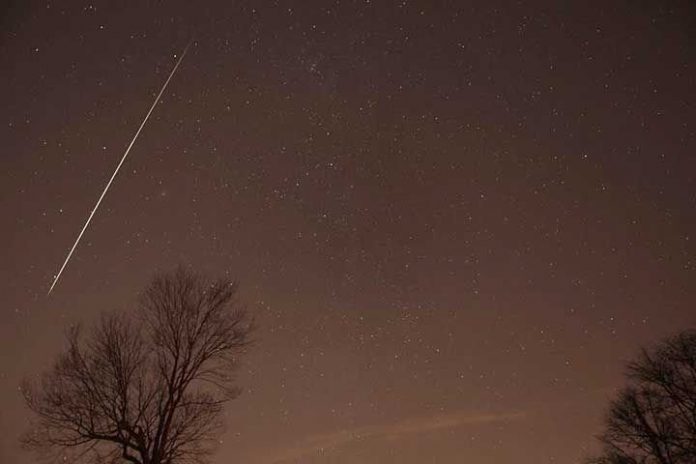
THE peak nights of the 2015 Geminid meteor shower are expected to be on Dec. 13–14 (night of December 13 till dawn December 14) and 14-15 (night of December 14 till dawn December 15). Geminid meteors tend to be few and far between at early evening, but intensify in number as evening deepens into late night. The waxing crescent moon will set at early evening, leaving dark skies for this year’s Geminid meteor shower. Geminid meteors are bright and Coyote-Harvey Bear Lake is hosting a viewing night on Dec. 13.
How to watch the Geminid meteors
The December Geminids are a particularly reliable and prolific shower, one of the finest of the year. In 2015, the peak night will be the night of December 13. Try the nights before and after, too, anywhere from about the evening of December 12 to the morning of December 15.
You need no special equipment– just a dark, open sky and maybe a sleeping bag to keep warm. Plan to sprawl back in a hammock, lawn chair, pile of hay or blanket on the ground. Lie down in comfort, and look upward.
Your local peak will typically be centered at about 2 a.m. local time, no matter where you are on the globe. As a general rule, the higher the constellation Gemini climbs into your sky, the more Geminid meteors you’re likely to see.
Some people mistakenly think that, since meteor showers have radiant points, you should look in the direction of the shower’s radiant point to see the most meteors, but this is not true. The meteors will appear in all parts of the sky. It’s even possible to have your back to the constellation Gemini and see a Geminid meteor fly by. However, if you trace the path of a Geminid meteor backwards, it appears to originate from the direction of the constellation Gemini.
It’s fun to bring along a buddy, that is why Coyote-Harvey Bear holds the viewing nights. Then people can watch in different directions. When someone sees one, they can call out “meteor!” This technique will let you see more meteors than one person watching alone will see.
Be sure to give yourself at least an hour of observing time. It takes about 20 minutes for your eyes to adapt to the dark. Be aware that meteors often come in spurts, interspersed by lulls.
Why are these meteors called the Geminids?
If you trace the paths of the Geminid meteors backward, they all seem to radiate from the constellation Gemini, hence the reason for the meteor shower’s name.
In fact, the radiant point of this meteor shower nearly coincides with the bright star Castor. However, the radiant point and the star Castor just happen to be a chance alignment, as Castor lies about 52 light-years away while these meteors burn up in the upper atmosphere, some 100 kilometers (60 miles) above the Earth’s surface.
You don’t need to find the constellation Gemini to watch the Geminid meteor shower. These medium-speed meteors streak the nighttime in many different directions and in front of numerous age-old constellations. It’s even possible to see a Geminid meteor when looking directly away from the shower’s radiant point. However, if you trace the path of any Geminid meteor backward, it’ll lead you back to the constellation Gemini the Twins.
What causes the Geminid meteor shower?
Every year, in December, our planet Earth crosses the orbital path of asteroid 3200 Phaethon, a mysterious body that is sometimes referred to as a rock comet.
In periods of 1.43 years, this small 5-kilometer (3-mile) wide asteroid-type object swings extremely close to the sun (to within one-third of Mercury’s distance), at which juncture intense thermal fracturing causes this rocky body to crack and crumble, and to shed rubble into its orbital stream. Annually, at this time of year, the debris from 3200 Phaethon crashes into Earth’s upper atmosphere at some 130,000 kilometers (80,000 miles) per hour, to vaporize as colorful Geminid meteors.
For more information about the Geminid shower, log on to earthsky.org/space/everything-you-need-to-know-geminid-meteor-shower#watch. Make reservations ay Coyote-Harvey Bear, and meet up with others at the launch ramp parking lot in Gilroy.
For more information go to sccgov.org.














